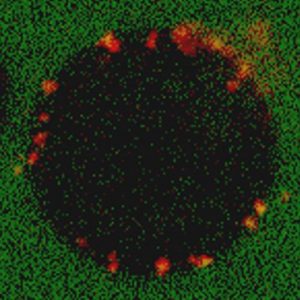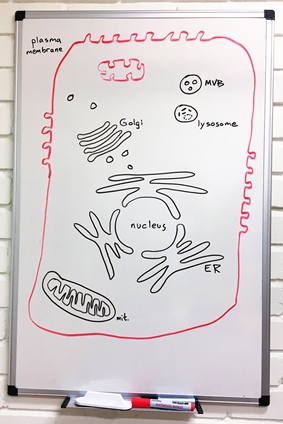VIRUSES, MEMBRANES AND MICROSCOPY
We study how viruses reshape the cells they infect. Our main interest is the drastic rearrangements of host-cell membranes that positive-sense RNA viruses carry out within hours of entering a cell.
Positive-sense RNA viruses are a vast group of viruses that causes human diseases ranging from common cold to hepatitis C, Chikungunya, Dengue fever and COVID-19. While these viruses differ from one another in many respects, they all share the same modus operandi of hijacking host-cell membranes, reshaping them to so-called replication complexes (also known as spherules, replication vesicles, etc). These virus-induced organelles contain the entire machinery needed to copy the viral RNA genome, and may serve the additional function of hiding the viral RNA from detection by the innate immune system.
Two orthogonal methods form the basis of our experimental work on replication complexes:
1. Cryo-electron tomography of cells. This method is uniquely capable of visualising the macromolecular architecture of the interior of cells at (sub)nanometre resolution, thus enabling in situ structural biology. These studies are conducted at the world-class instruments of the Umeå Centre for Electron Microscopy (UCEM).

2. In vitro reconstitution of membrane-localised biological processes. This is a synthetic biology approach aimed at recreating a biological process from its individual components, thus identifying and characterising the minimal machinery required to perform a certain task. For in vitro reconstitution experiments we are highly depending on our biochemistry skills to isolate functional forms of the macromolecules involved in the process. In a typical experiment we label individual components with fluorescent dyes, assemble them on synthetic membranes such as GUVs (giant unilamellar vesicles) and SLBs (supported lipid bilayers), and analyse their interactions by quantitative fluorescence microscopy at the Biochemical Imaging Centre Umeå (BiCU).

In addition to the above-mentioned methods, we let the projects dictate how we answer our research questions. Whether single particle cryo-EM, live-cell fluorescence, liposome binding assays or Western blotting. And few images receive as many Oohs and Aahs as a nice Coomassie-stained gel!




